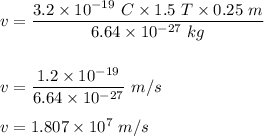

Answers: 1
Other questions on the subject: Physics

Physics, 22.06.2019 22:00, lex1kkkk
The inside surface of a cylindrical-shaped cave of inner diameter 1.0 m is continuously covered with a very thin layer of water. the cave is very long and it is open on both ends. the water on the cave surface is at a constant temperature of 15.5 °c. the cave is constantly exposed to wind such that 15.5 °c air flows through the cave at 4.5 m/s. the kinematic viscosity of the air is 14.66 x 10-6 m2/s and the molecular diffusion coefficient of water vapor in the air is 0.239 x 10-4 m2/s. because the cave diameter is so large, the flow of wind down the length of the cave, in the x direction, can be treated like it is external flow and the cave surface can be approximated as flat where appropriate. calculate the x value, in a) the transition to turbulent flow occurs at rex meters, where the air flow transitions from laminar to turbulent along the inside surface of the cave b) calculate the x value, in meters, where the bulk steady state concentration of water vapor in the air flowing in the cave is 10% of the saturation concentration. assume the air at the surface of the water layer is 100% saturated with water vapor. assume the wind entering the cave contained no moisture before it entered the cave. take into account the transition from laminar to turbulent flow when solving part b
Answers: 1


Physics, 23.06.2019 03:20, marshaehayes9444
Neutrons are placed in a magnetic field with magnitude 2.30 t. part a part complete what is the energy difference between the states with the nuclear spin angular momentum components parallel and antiparallel to the field? δe δ e = 2.77×10−7 ev previous answers correct part b part complete which state is lower in energy: the one with its spin component parallel to the field or the one with its spin component antiparallel to the field? which state is lower in energy: the one with its spin component parallel to the field or the one with its spin component antiparallel to the field? parallel antiparallel previous answers correct part c part complete how do your results compare with the energy states for a proton in the same field (δe=4.05×10−7ev)? how do your results compare with the energy states for a proton in the same field this result is smaller than but comparable to that found in the example for protons. this result is greater than but comparable to that found in the example for protons. previous answers correct part d the neutrons can make transitions from one of these states to the other by emitting or absorbing a photon with energy equal to the energy difference of the two states. find the frequency of such a photon. f f = mhz previous answersrequest answer incorrect; try again; 5 attempts remaining
Answers: 2
Do you know the correct answer?
An alpha-particle (m = 6.64 × 10−27 kg, q = 3.2 × 10−19 C) travels in a circular path of radius 25 c...
Questions in other subjects:

Mathematics, 01.07.2019 05:00

Mathematics, 01.07.2019 05:00

Mathematics, 01.07.2019 05:00







Mathematics, 01.07.2019 05:00


 .
.






